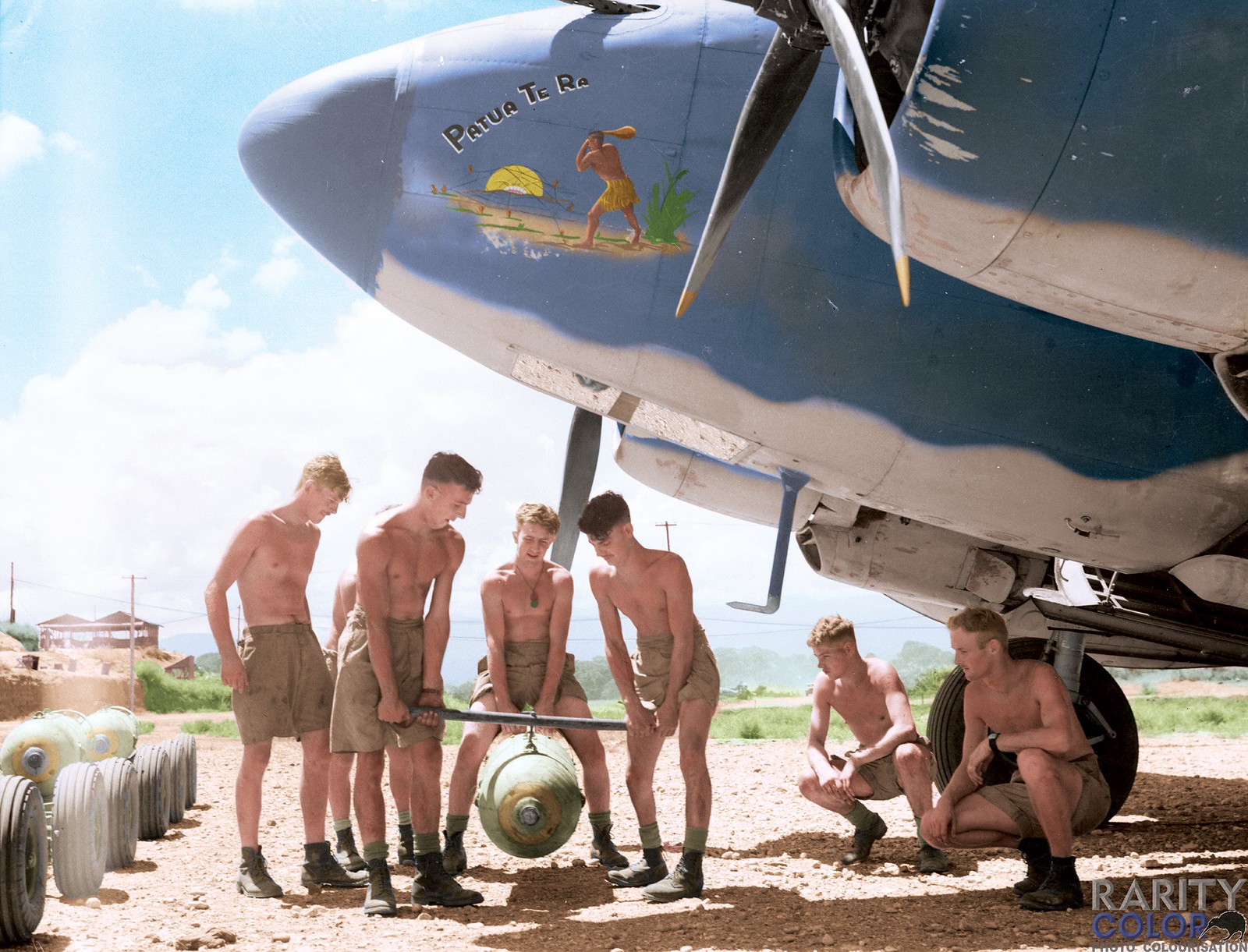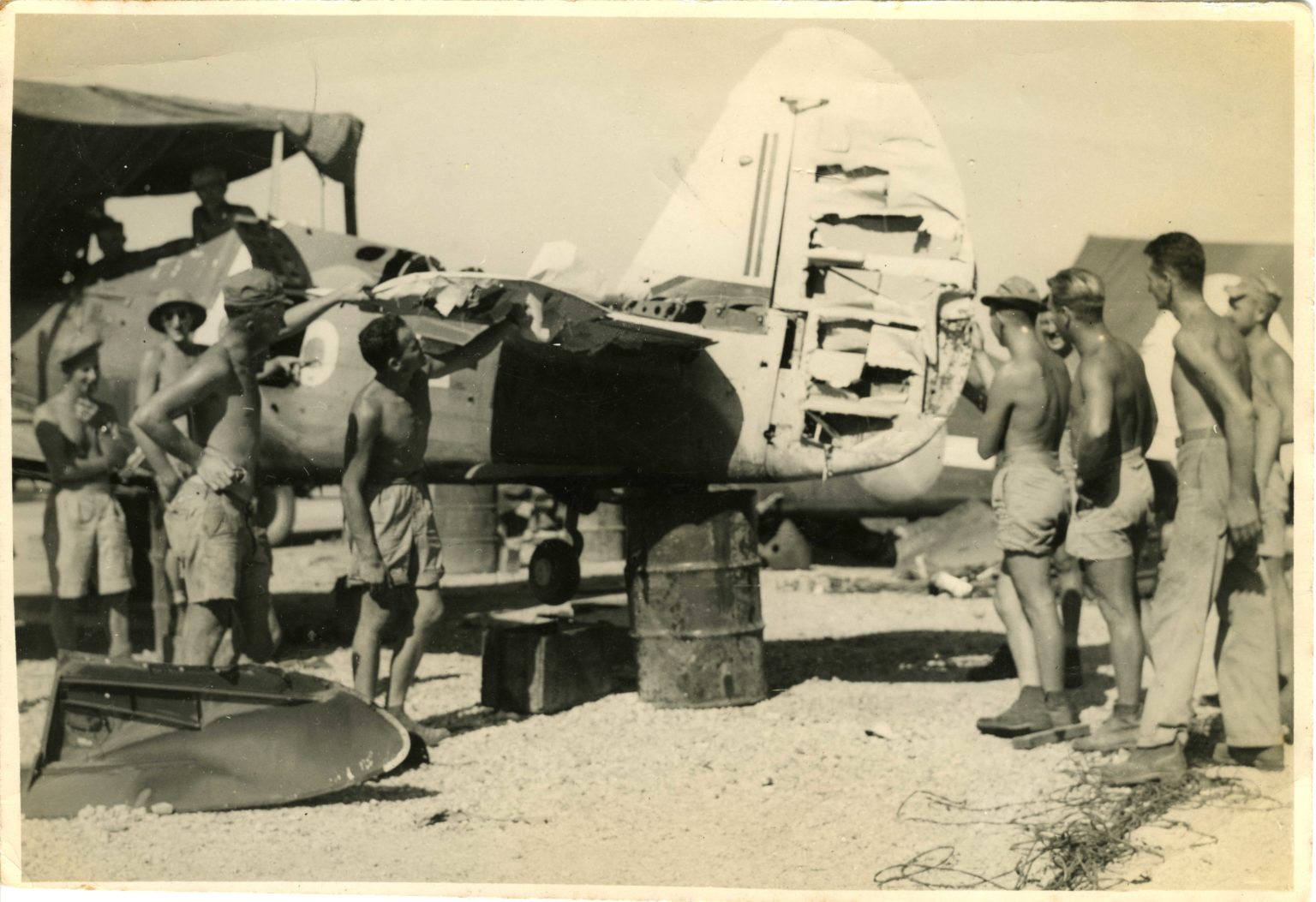|
|
Post by airforceremembrance on Oct 30, 2023 14:26:03 GMT 12
Team, I'm new to the forum. I frequently use the site to locate key information and fantastic insights, but this is my first post seeking assistance.
I'm currently conducting research into the award of the Military Medal to Corporal Leslie Yates for his work leading a three-person aircraft maintenance team repairing an aircraft whilst subject to Japanese artillery fire on Bougainville in March 1944. I believe this is the only such award to ground crew in the RNZAF.
I have seen the entry in Hanson's awards to the RNZAF book, which indicates the aircraft was Ventura NZ4516. Can anyone please advise which Squadron this aircraft was with?
Any assistance greatly appreciated.
|
|
|
|
Post by Dave Homewood on Oct 30, 2023 15:50:31 GMT 12
I will have a look into this for you. The aircraft would have belonged to a Servicing Unit, and so would Corporal Yates. But I should hopefully be able to pinpoint which squadron was operating it at that time.
|
|
|
|
Post by McFly on Oct 30, 2023 15:57:22 GMT 12
There's a previous thread about NZ4516 with some information here ( link)..  And - Yates appears in Colin Hanson's By Such Deeds - Honours and Awards in the Royal New Zealand Air Force, 1923-1999: YATES, Corporal Leslie Vincent, MM.NZ403361; Born Llanelly, Wales, 23 May 1919; RNZAF 6 Sep 1940 to 15 Sep 1945; Fitter IIA. Citation Military Medal (29 Sep 1944): Gallantry and extreme devotion to duty were displayed by this non-commissioned officer in the face of intensive enemy action over a period of two weeks at Bougainville, Solomon Islands. Although for a greater part of the time the landing strip had been evacuated of aircraft as it was in line of constant shelling from artillery attacking the Allied positions, Corporal Yates continued with his task of repairing a damaged bomber aircraft beside the strip, and even when, at one stage, all other personnel had been withdrawn for four days, he and his party carried on in an exposed position regardless of the fall of enemy shells, some of which landed sufficiently close to cause further damage to the aircraft under repair. Under his leadership repairs were eventually completed, and the aircraft later flown to base. The aircraft was Ventura NZ4516, with repairs being undertaken Mar 1944. See also E A Henrickson and D E Ohms. Errol |
|
|
|
Post by Dave Homewood on Oct 30, 2023 16:18:35 GMT 12
Thanks Marty.
So the aircraft belonged to No. 10 Servicing Unit when it was damaged, and operated at that time by a No. 1 (BR) Squadron crew.
However No. 1 (BR) Squadron returned to New Zealand by the 22nd of February and No. 10 Servicing Unit (or 10SU) was now working with No. 2 (BR) Squadron by the time the repair was done.
No. 2 (BR) Squadron moved from Guadalcanal and Munda, where it had been based with 10SU, up to Bougainville in April 1944. So at the time of the repair I think it is most likely that Cpl Yates was from 10SU and 2 BR Squadron would have supplied the crew to retrieve it, I'd think.
|
|
|
|
Post by McFly on Oct 30, 2023 17:04:47 GMT 12
"Ground crew of 10 (SU) bombing up RNZAF Ventura NZ4516, Henderson Field, Guadalcanal, December 1943. This aircraft was normally flown by F/Lt. Spicer of 1(BR) Squadron.
Nose art: "Patua Te Ra". The Maori god Maui is brandishing a club at the rising sun, which he has caught in a net. Maui and the Sun is a traditional legend from the Maori people of New Zealand. It explains how Maui and his brothers slowed the sun's journey across the sky to make the days longer for eating, fishing, and hunting. 'Patua Te Ra' translates as 'Striking the Sun'. (Colorized by Daniel Rarity)" ( Link)..  
|
|
|
|
Post by davidd on Oct 31, 2023 8:40:06 GMT 12
There was a somewhat similar event, but at Torokina (Bougainville) on 16th March 1944, when a P-40 of 4 SU (fully fuelled and loaded with a 500 pound HE bomb, standing stationary at the time near the strip), was near-missed (exploded 15 yards away) by a Japanese artillery shell fired from the nearby hills to the north of the airfields. An airman (NZ401472 LAC A J Gardner, Fitter IIA) who was working on the aircraft was blown off the wing by the blast and suffered concussion. The aircraft concerned (NZ3178/E, unmanned at the time, apart from Gardner of course!) was equally unlucky, suffering severe fragmentation damage to rear fuselage and tail surfaces, and the port aileron also caught fire. Airframe was later considered to be beyond economical repair and and was subsequently written off on 15th April. This aircraft was being operated by 19 Squadron at time of the incident (pilot u/k to me) and was due to undertake a strike against Vunapope supply area, Rabaul, and would probably have called in at Green Island on return if not for the interloping shell. So this strike was flown by just 11 aircraft instead of ususal 12.
This was only RNZAF aircraft known to have been destroyed on ground by enemy fire in South Pacific during WW2, although several RNZAF PV-1s did suffer fragmentation damage at Munda the following month, caused by light aerial bombs dropped by Japanese.
|
|
|
|
Post by Dave Homewood on Oct 31, 2023 9:49:17 GMT 12
Here is a shot of that P-40N, NZ3178, having the damage assessed by 4SU airmen, from Ron Hildreth's photo collection.  |
|
|
|
Post by davidd on Oct 31, 2023 10:00:47 GMT 12
Good find Dave!
|
|
|
|
Post by davidd on Oct 31, 2023 10:39:52 GMT 12
A slightly fuller version (mostly from 1 Squadon's ORB, Form 540, also contribution from 10 SU's ORB) of the difficulties suffered by Ventura NZ4516 which led to the award which originally triggered this thread:
24/3/44; PV-1 NZ4516 flown back from Bougainville by a 2 Squadron crew after being u/s there since the 17th January. (Note, this aircraft was damaged at Piva Uncle on 18th January when its tailwheel went into a ditch and collapsed whilst it was taxying out for take off, and was subsequently further severely damaged by the American Wrecking crew (accurately named!) when they attempted to remove the crippled aircraft from the strip.
|
|
chook
Flying Officer

Posts: 64
|
Post by chook on Oct 31, 2023 11:37:22 GMT 12
Off topic but incase it is of interest, I note in my Fathers log book he was based at Torokina until mid March 1944 and noted the following:
Mar 8 "Japanese shelling both strips heavily, near misses by our tents"
Mar 9 "Shelling still in progress, hits on mess and S.H. Poor show". (S.H. was the latrine...)
Mar 11 "Shelling of strips and personnel areas still in progress"
18 Squadron then departed later on Mar the 11th. Dad also brought home a piece of Shrapnel which landed in front of his trench during this period. Has Japanese Kanji script pressed into it.
|
|
|
|
Post by Dave Homewood on Oct 31, 2023 12:15:28 GMT 12
I recall reading accounts from the No. 30 Squadron and No. 30 Servicing Unit members from their time at Piva, the Japanese were not just shelling the Piva strip but also snipers were in the trees around the airfield and they would try to pick off people as they worked on aircraft or were in the camp. One chap wrote of a sniper's bullet passing through his tent and out the other side when he and others were in it. And they would watch the RNZAF Dauntless dive bombers take off, turn round and then bomb Japanese mortar positions and other emplacements literally just outside the Kiwi camp! Very scary I'd imagine, knowing you're surrounded and being watched.
|
|
|
|
Post by davidd on Oct 31, 2023 13:36:00 GMT 12
There were two periods of serious Japanese Army activity on the Torokina perimter (Bougainville) to push the Allies back into the sea; the first was March 1944 (and subject of this thread), an advance which took some beating back (at one stage all the Allied aircraft had to be flown out every night to another Allied airfield nearby (Green Island?) to protect them from the shelling, and then fly them back in again the next morning). Similar aggressive activity took place in March/April 1945 from memory, although this eventually fizzled out too; however this was also a very serious time to be on Bougainville, and a (fourth) RNZAF F4U squadron was hurridly flown into Piva to assist with the task of beating back the enemy. The new squadron's ground staff had to be flown up by C-47 from Guadalcanal, and the local RNZAF types were quite amused to see the "new chums" getting off the transport aircraft and looking wildly about in case the enemy troops were already overrunning the perimeter!
|
|
|
|
Post by Dave Homewood on Nov 7, 2023 6:27:32 GMT 12
Wow, I had not realised the Japanese threat on Torokina continued to so late in the war.
|
|

